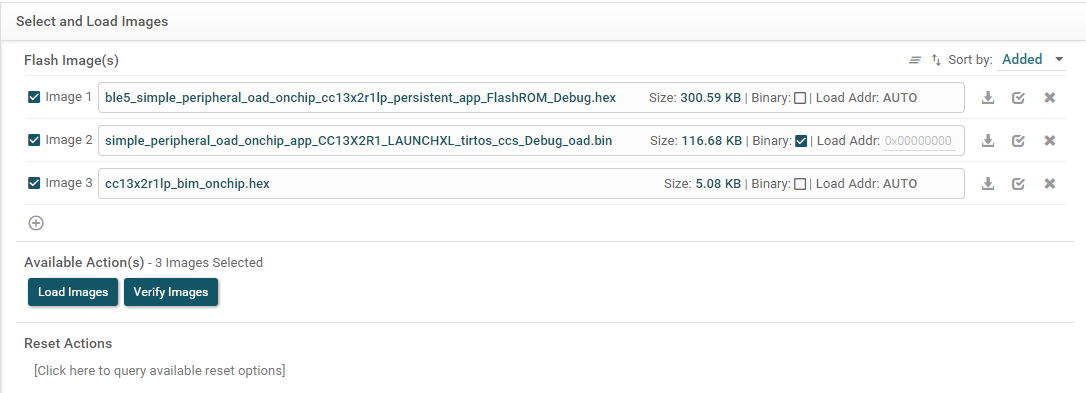Other Parts Discussed in Thread: UNIFLASH
Hi,
I have run into some problems when try to use the example project simple peripheral on-chip OAD.
Hardware and software as follows:
Hardware: LAUNCHXL-CC1352R1 and iPhone.
Software: Code Composer Studio 9.3.0, SDK simplelink_cc13x2_26x2_sdk_3_40_00_02, UniFlash 6.0.0.2710, BLE Scanner and TI SimpleLink Starter.
I build and flash the persistent application(ble5_simple_peripheral_oad_onchip_cc13x2r1lp_persistent_app) through UniFlash, then I build and flash user application(simple_peripheral_oad_onchip_app_CC13X2R1_LAUNCHXL_tirtos_ccs) through UniFlash. Finally, I flash BIM(cc13x2r1lp_bim_onchip.hex) in TI SDK Debug_unsecure dirctory through UniFlash. As shown below:
Then I can scan "SP OAD on-chip" and connect it by iOS app BLE Scanner(This time I will enter the user application). I write 0x01 to service FFDO characteristic FFD1 on this user application. This would reset the device and boot the persistent application which has FFC0 OAD Service. And I notice the connection does break. Then the device boots to persistent application. At this time(Enter the persistent application), I can scan "Simple peripheral" but I can't connect it successfully by iOS app BLE Scanner or TI SimpleLink Starter. Could you please help me analyze the root cause ?
Another question:
Where dose the incoming OAD firmware(User App + Stack Library) store at the very beginning in the internal flash during the On-Chip OAD process? Or say which one (1 or 2) does the incoming OAD image store at the very beginning in the following picture?
Thank you.
BRs.



